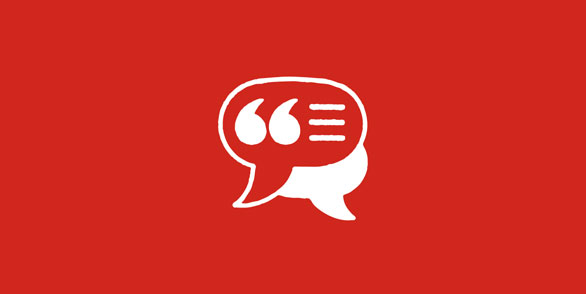Many employers prioritize employee engagement programs to strengthen culture, boost productivity and foster business growth. However, their efforts are not always successful because they don’t make a conscious effort to understand their employees’ workplace expectations. Only by creating an engagement program that motivates workers and makes them happy is it possible to effectively engage them.
Table of Contents
What are employee engagement initiatives
Engagement initiatives are methods of creating an emotional state of mind within employees that propels them to perform their best work sustainably. There are many ways to achieve this result, but most successful employee engagement programs have three commonalities:
- Team leader engagement – Employee engagement is integrally linked to team leader engagement.
- Sense of team – If employees don’t feel connected to a team, all other engagement efforts will be undermined.
- Trust – Staff engagement programs must create a deep level of trust between team leaders and team members.
Employee engagement ideas to keep workers happy
Happy employees often invest more of themselves in their work. To design engagement programs that support employee happiness, employers may take the following steps:
- Create positive emotions – Creating a positive moment can be as simple as a supervisor greeting team members in the hallway or allowing employees to have pictures of loved ones in their work station.
- Ensure job fit – Employers must first hire the right people and then continually reassess whether their abilities and interests match their assigned roles.
- Give back – When an organization is a good corporate citizen and visibly gives back to the community, its employees may feel a sense of meaning by extension.
Employee engagement program ideas
At its core, finding new ways to boost employee engagement means helping people enjoy their jobs more. Ideas range from check-in conversations and employee recognition programs to creative perks and gamification. Ultimately, employers may need to use surveys to discover what most effectively drives engagement amongst their employees.
Mobile technology
Mobile tech supports the future of work, allowing employees to work how, when, and where they want. It also improves the benefits experience. Employees may be able to complete open enrollment and access information about their health insurance and retirement savings plans via their mobile devices.
Recognition and rewards
Positive reinforcement through a recognition and rewards program helps employees feel esteemed and valued at a company. The appreciation can be tangible, such as a cash bonus, or intangible, like thanking someone for a job well done. Either way, employers must be mindful of generational differences amongst their workforce. Some employees may crave formal recognition with a plaque or a ceremony, whereas others might prefer more frequent praise without the fanfare.
Self-managed teams
When surveyed, disengaged employees may complain about management. A novel response to this problem is to reduce or even eliminate traditional supervisory roles. Stability and structure are maintained through various self-management tactics, such as employee peer groups, personal mission statements and colleague letters of agreement. These approaches may not work for every organization, but some have found that their employees thrive when given more autonomy.
Check-in conversations
Weekly, check-in conversations can be the most powerful five minutes spent at work. Managers learn what their team members are working on and where they need assistance. This information not only helps supervisors lead more effectively, but it also drives performance and engagement. Employees who regularly converse with their leaders are more likely to feel they will be recognized for excellent work, more confident in their opportunities for career challenges, more aligned with the organization's future and more likely to use their strengths.
Employee perks
Unique perks based on employee interest are sometimes the engagement and retention driver organizations need. Some popular examples include:
- Yoga classes and gym memberships
- Free meals, snacks and coffee
- Flexible work arrangements
- Services that assist with daily tasks, like dry cleaning pick-up
- Commuter benefits, including tolls, parking fees or public transportation costs
Seasonal adjustments
Maintaining engagement during the summer can be challenging. The nice weather sometimes causes employees’ minds to wander to outside activities rather than work. Organizations would do well to acknowledge these distractions and shake up normal routines to improve engagement. Here’s how:
- Allow employees to leave the office early every other Friday.
- Proactively encourage people to use their vacation time.
- Conduct meetings with team members while walking outside.
- Tailor rewards around summer themes, like outdoor concert tickets.
Relaxed dress codes
Most employees, if asked, would likely prefer greater freedom in their work wear for reasons of individual expression, comfort or practicality. Employers can provide guidance on appropriate attire, but strict rules sometimes cause feelings of mistrust amongst employees. Unless there is a specific business need or safety issue for a dress code, employers may want to scale it back or eliminate it. And if employees dress inappropriately, it’s usually better to coach them on their mistakes rather than discipline them.
Transparency
Employees can get frustrated when they don’t understand why business decisions are made. Employers can help avoid such negativity and improve their reputation as an honest organization by being more transparent. Some tactics include the following:
- Explain the goals of the company and how employees are helping achieve them.
- Store documents and data in the cloud so employees can access information easily.
- Encourage employees to converse with senior leaders and share their ideas.
- Communicate the performance benchmarks necessary for career advancement.
- Share bad news with employees even if they may not like the immediate effects.
Benefits packages
Employer-sponsored benefits can help employees feel that they’re cared for at work. Traditional plans include medical, dental and vision insurance, and retirement savings programs. However, there are no one-size-fits-all benefit solutions. Those that successfully promote engagement tend to be customizable and allow employees to choose the options that best fit their individual needs.
Executive playbooks
Engagement starts at the top of the organization, but too often, senior executives don’t know how to lead in a way that supports engaging workplaces. HR can help them by creating playbooks that outline some behaviors and actions expected of company leadership. For example, the playbook might suggest that executives schedule weekly opportunities to speak with frontline employees about the organization. Their role during these conversations is to ask good questions and listen attentively. They can then regroup with the rest of the executive team and share the employee feedback.
Training and development courses
Employees today desire training programs that are applicable to both their professional and personal growth. In response, employers must identify suitable courses, deliver them on the device of the employee’s choosing and ensure that the content is location- and role-specific. They can further foster employee development by providing team leaders with information on each team member’s training requirements and prospective career paths.
Employee engagement surveys
Engagement surveys can yield important data about the environmental and managerial factors that motivate employees. Questions commonly focus on job satisfaction, communication effectiveness, managerial tactics, and ratings of importance. The goal, however, is to not only ask employees for their opinions, but also act on the feedback in ways that may help boost engagement. If nothing consequential happens, employees may view the surveys as pointless and participation rates will drop.
Wellness programs
If employees are unwell and incapable of meeting their potential, an employer’s engagement efforts may never be fully realized. Sponsoring medical insurance can help support workers’ physical health, but it may not address their mental and financial stressors. A more holistic approach to wellness encompasses work-from-home programs, flexible schedules, and mental health and financial counseling.
Gamification
Gamification motivates employees to beat a deadline or complete a mundane assignment by playing a game. Aided by technology, this approach allows staff to have fun, reduce stress and build social networks while working or fulfilling training requirements. Some tips for successful adoption of gamification include:
- Encourage senior leaders to participate in the games.
- Keep score and recognize those who lead the pack.
- Acknowledge small victories, such as awarding points for getting started.
- Check on anyone lagging behind who may have technical challenges or other barriers.
- Offer prizes or special opportunities to boost competitiveness.
Hybrid work schedules
Hybrid work schedules allow employees to work some days in the office and others from home. The flexibility of this model gives employees more autonomy and tends to improve their productivity and reduce their stress, all of which adds up to better engagement. In fact, ADP Research found that hybrid workers are 1.7 times more likely to be engaged than on-site staff and 1.9 times more likely to be engaged than fully remote workers.1
Modern onboarding experiences
Paper-driven or disorganized onboarding processes can delay a new hire’s ability to contribute to the organization. In contrast, digital onboarding experiences help employees become productive as quickly as possible. They may be able to complete some of the required forms and learn about the workplace culture, expectations and success factors in advance. As a result, they’re more likely to feel as though they’re part of the team and engaged from the first day.
Meaningful work
Most employees desire to perform work that’s important. Employers can help them find meaning in their labor and maximize engagement by treating them as stakeholders in the organization’s future. For example, managers may want to ask the following questions before assigning work:
- Can the work be reframed or altered to align with things the employee cares about?
- Will the assignment increase the employee’s feeling of responsibility within the company?
- Does the work simplify processes, promote team dynamics or highlight the organization's mission and values?
Frequently asked questions about employee engagement
What are the levels of employee engagement?
HR professionals generally recognize three levels of employee engagement:
- Engaged: These employees are passionate about their work, feel connected to the business and constantly strive to innovate and achieve goals.
- Not engaged: Employees who are not engaged show up for work each day and do their tasks, but they aren’t passionate or innovative and contribute little beyond the bare minimum.
- Actively disengaged: Not only are these employees deeply unhappy, but they may also act inappropriately or deliberately work against the organization's objectives.
What factors impact employee engagement?
ADP Research has found that employee engagement is greatly influenced by:
- The level of engagement of team leaders
- The sense of belonging to a team
- Trust between team leaders and team members
Why measure employee engagement?
Measuring employee engagement frequently can help employers understand the needs of their workforce and develop more effective strategies for maximizing performance. It also provides valuable insight into the effectiveness of team leaders.
What differentiates employee engagement from job satisfaction?
Job satisfaction is a byproduct of engagement, but employee contentment on its own may not translate to improved business outcomes. Engagement is more closely aligned with performance because it focuses on setting work expectations, giving employees what they need to excel, and providing development opportunities.
Whose job is employee engagement?
HR plays an important role in ensuring that the practices that support engagement are embedded throughout the organization. However, employee engagement is ultimately driven by relationships between team leaders and team members. That’s why modern engagement tactics emphasize the role of managers and empower them to have frequent, light-touch check-ins with their team members.
Why is employee engagement important?
Efforts to improve employee engagement are sometimes the best investment companies can make. When employees are fully engaged, they’re more likely to do the following:
- Go the extra mile to satisfy customers
- Ensure product or service quality
- Help other team members succeed
- Innovate and share new ideas
- Act as brand ambassadors
This article is intended to be used as a starting point in analyzing employee programs for engagement and is not a comprehensive resource of requirements. It offers practical information concerning the subject matter and is provided with the understanding that ADP is not rendering legal or tax advice or other professional services.






